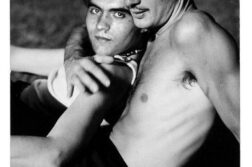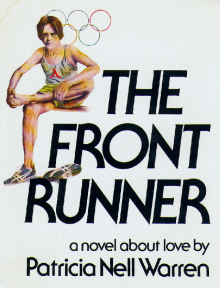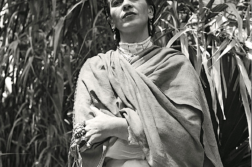EARLIER THIS YEAR, my film programming colleagues and I at Frameline—the San Francisco International lgbtq Film Festival—met to begin the always agonizing process of selecting our favorites from several hundred new films submitted by filmmakers from around the world, the goal being to assemble a representative snapshot of our cinematic moment. There are a few obvious trends that we could spot immediately: strong narratives from Latin America with gay male or transgender protagonists (In the Grayscale, Mariposa, Carmín Tropical, among many others); fascinating stories emerging from areas like the Balkans, which have rarely produced queer work (Sworn Virgin, Love Island, Xenia); and a spate of bracing documentaries about North American athletes, created in the wake of Michael Sam, Jason Collins, and the Sochi Olympics (Game Face, Out to Win, To Russia with Love).
But there’s one development that has taken me a bit longer to identify as it isn’t as clear-cut. Call it the Year of the Bad Queer. Some of the most memorable North American narrative films of the past year have featured GLBT protagonists—not side characters, but principals—who are deeply, irredeemably flawed. I’m not talking about the traditional flaws of antiheroes—quirks and oddities, suspect motives, disarmingly human failings. I’m talking about polarizing, problematic, occasionally awful people who happen to be gay. Their journey is at the center of the film, so we are asked to care about their fate, but their behavior is offensive; they are morally impoverished, mean, vain, passive-aggressive, violent, immature, or, in more technical language, generally fucked up.
Some examples of the Bad Queer phenomenon would include the following, all quite accomplished films with theatrical distribution deals in place or at least a lot of festival accolades and buzz:
- The title character of Justin Kelly’s I Am Michael—based on the true story of Michael Glatze, played by James Franco—goes from being a committed gay youth activist to a homophobic evangelical preacher intent on hurting the community he once loved.
- The screenplay of Sebastián Silva’s Nasty Baby is almost sadistically constructed so that its central character—a garden-variety Brooklyn performance artist, played by Silva himself—transforms (spoiler alert) from likable prospective gay dad in the first half to brutally violent criminal in the second.
- In her feature debut, writer-director-star Desirée Akhavan creates in Appropriate Behavior a central character, Shirin, who’s best described as a lesbian, Iranian-American version of Hannah Horvath from Girls—socially awkward, narcissistic, immature for her years, and incapable of taking responsibility for her failings.
- In Joey Kuhn’s debut feature Those People, the film’s most volatile, charismatic gay character is Sebastian Blackworth, a self-absorbed, manipulative, Upper East Side socialite who may have abetted his swindling father’s crimes (think Bernie Madoff).
- Lily Tomlin’s title character in Paul Weitz’ Grandma, while admittedly a fierce and admirable advocate for her pregnant granddaughter, is mean, self-pitying, occasionally violent, and a self-described “asshole.”
- The irreverent Canadian black comedy Guidance is about a self-loathing, alcoholic former child star who’s in denial about his homosexuality and, in career desperation, lies his way into a job as a high school guidance counselor, offering the children vodka shots and such affirmations as “I want you to be an inspiration to all the other sluts.”
Rather than be appalled by this newly hatched cast of fuck-ups or lament the scarcity of queer heroes, I think we should see this trend as reassuring—precisely because these films refuse to repeat the tropes of two decades of GLBT protagonists. Unlike their predecessors, the dramatis personae in this new generation of indies are not defined primarily by their sexuality, and their struggles are not about their sexual orientation. They’re dealing with a host of dysfunctions—bad parents, economic distress, addiction, grief—but they’ve largely integrated being gay into their otherwise messed-up lives. What’s most striking about these new antiheroes is that their flaws usually get the better of them. Most of these films’ denouements do not come with a side order of redemption (with the possible exception of Elle in Grandma, which, interestingly enough, was created by a heterosexual writer-director).
So why this sudden proliferation of queer jerks and nasties? (Okay, there have been a few such characters in the past, like Aileen Wuornos in Monster or Ripley in The Talented Mr. Ripley, but they were once the exception.) I believe we’re seeing a new generation of writers and directors who are eager to create characters that veer away from the well-worn track of indie queer protagonists to date. Ironic and unsentimental, these filmmakers have moved beyond brave teens coming out to disapproving parents, misunderstood rural folk heading for the big city, or anything smacking of martyrdom for a gay cause. They’ve seen enough episodes of Modern Family to know that America may not need another likable homosexual on the screen on whom the audience can project its sympathy or approval. They’re feeling emboldened, or even entitled, to present what might be considered offensive gay or lesbian characters. Perhaps they wish to be seen as provocateurs as well as auteurs. They certainly show a healthy disregard for accusations of “internalized homophobia” (which have been leveled by some critics of these films). And they seem to trust the audience is ready to embrace stories that aren’t, in the end, an exercise in community pride.
As a result, queer film audiences finally have a narrative pleasure that has been afforded to straight viewers since the dawn of film noir: a central character who is highly problematical, but fascinating. There is an instructive parallel to this phenomenon that happened nearly fifty years ago involving another minority, namely American Jews. In the wake of growing social acceptance of Jews and waning anti-Semitism at home, a wave of cinematic “bad-boy Jews” swamped the screen in the late ’60s and early ’70s. Think of the cad played by Richard Benjamin in Goodbye, Columbus, the matricidal George Segal in Where’s Poppa, or several of Elliott Gould’s rakes, cynics, and reprobates. This loosening and complicating of Jewish characters on-screen reflected a newfound confidence among young Jewish writers and directors, who were willing to risk offending people in order to widen the spectrum of Jewish personae beyond the pleasant pigeonholes of scholar, singer, soldier, milquetoast, or suburban assimilator that predominated in the postwar period.*
Could we be witnessing an analogous “bad queer” moment now, even as we witness the onset of marriage equality and I Am Cait? I suspect we are in for an extended run of “gays gone bad” on the big screen, if only because screenwriters now need something spicier than vanilla queerness to flavor their films. Expect a rash of Patricia Highsmith adaptations (two are already around the corner) and, who knows, maybe another biopic about J. Edgar Hoover, Roy Cohn, or Jeffrey Dahmer.
Peter L. Stein, a documentary filmmaker, is currently senior programmer for Frameline, the San Francisco International LGBTQ Film Festival.
* See J. Hoberman’s Entertaining America: Jews, Movies, and Broadcasting (2003, Princeton U. Press) for more on this period in American Jewish screen history.





